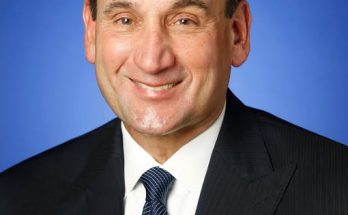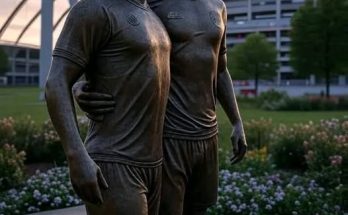The Clemson Tigers are entering the 2025-26 college basketball season with more momentum—and expectations—than they’ve had in years. After a breakthrough Sweet 16 appearance last season, head coach Brad Brownell has retooled his roster with a mix of returning leaders, talented transfers, and a top-tier freshman class that signals a clear goal: Clemson isn’t content with being good. They want to be great.
For a program often seen as a football school first, the narrative surrounding Clemson basketball is beginning to shift. Brownell, now entering his 15th season in charge, has steadily crafted a culture of consistency and competitiveness. With a 2024-25 campaign that saw the Tigers go 24-10 and finish in the upper echelon of the ACC, national respect is starting to match internal belief.
The offseason began with key decisions from several veterans. Chief among them was the return of senior guard Chase Hunter, a catalyst on both ends of the floor who averaged 14.1 points and 4.6 assists per game last year. Known for his poise in the clutch and defensive tenacity, Hunter’s decision to run it back has energized the locker room and reaffirmed the team’s identity: tough, experienced, and unafraid.
Joining him is forward Ian Schieffelin, whose growth into one of the most versatile big men in the conference turned heads. Averaging nearly a double-double and expanding his shooting range, Schieffelin has drawn NBA interest but elected to spend one more year in college. His presence gives Clemson a frontcourt anchor capable of stretching defenses, initiating fast breaks, and defending multiple positions.
But what truly sets this Tigers squad apart is the talent infusion from the transfer portal and incoming recruiting class. Clemson landed former Oregon State sharpshooter Tyler Bilodeau, a 6-foot-8 wing who provides instant offense and shooting consistency from deep. Bilodeau’s ability to space the floor is expected to complement Hunter’s slashing game and open up the paint for Schieffelin.
The backcourt received a further boost with the arrival of freshman phenom Jordan Hicks, a top-50 recruit out of Georgia who turned down offers from Michigan State, Texas, and Auburn to join the Tigers. A lightning-quick combo guard with elite court vision and a fearless mentality, Hicks is expected to make an immediate impact. While he’s still adjusting to the speed of the college game, early practices have shown flashes of brilliance—particularly in transition and late-clock situations.
Brownell’s coaching staff, now bolstered by the recent addition of sport performance director Jon Uribe, has put a premium on physical development and injury prevention. Uribe, known for his cutting-edge approach to strength training and recovery, has already implemented new offseason protocols that players say have improved conditioning and energy levels in workouts.
That kind of preparation could be the key to navigating a grueling ACC slate that includes perennial powerhouses Duke, North Carolina, and Virginia. Clemson’s schedule is among the toughest in the country, with marquee non-conference matchups against Baylor and Arizona State, and a high-stakes ACC/SEC Challenge showdown against Alabama.
Still, the Tigers aren’t shying away from the challenge.
“This is the deepest and most versatile team I’ve coached at Clemson,” Brownell said in a preseason media availability. “We’ve got experience, we’ve got young talent, and we’ve got guys who can guard, shoot, and play multiple spots. That gives us flexibility in how we approach each opponent.”
That flexibility will be critical, especially given the modern trend toward positionless basketball. Clemson has built a roster full of 6-foot-5 to 6-foot-8 athletes who can switch defensively and create mismatches offensively. Wings like Dillon Hunter and Chauncey Gibson Jr. are expected to take leaps forward after showing flashes of brilliance last year. Both bring length, athleticism, and the ability to guard three positions.
Clemson’s frontcourt depth also improved with the commitment of four-star freshman Makai Jefferson, a 6-foot-10 center from North Carolina with a high motor and shot-blocking instincts. Though raw offensively, Jefferson’s presence in the paint offers rim protection and rebounding—two areas Brownell emphasized heading into the new season.
Behind the scenes, the culture of accountability continues to grow stronger. Team captains have taken ownership of offseason workouts and bonding activities, including player-led film sessions and open-gym scrimmages. The collective buy-in has caught the attention of NBA scouts and college basketball analysts alike.
“They’re a scary team if they stay healthy,” said one anonymous ACC coach. “Not a lot of weaknesses, and they play hard for 40 minutes.”
While much of the national attention in the ACC still gravitates toward bluebloods like Duke and Carolina, Clemson is quietly building something sustainable. Last year’s tournament run showed what’s possible. This year’s group wants more.
One of the most encouraging signs is the improvement in late-game execution. In past seasons, Clemson had a reputation for struggling in tight contests. But last year’s Tigers went 7-3 in games decided by five points or fewer—a testament to maturity, preparation, and composure.
“We’ve been in those moments before,” Chase Hunter said during a recent interview. “We’re not afraid of the big lights. We’ve seen the tournament. We want to go deeper now.”
That kind of mindset could prove invaluable in March, especially with a conference that’s as loaded and unpredictable as ever. With rising programs like Miami, NC State, and Virginia Tech all vying for positioning, Clemson’s margin for error will be slim. But if they can stay healthy, execute, and maintain their identity as a disciplined, balanced team, they’ll be right in the mix for another deep postseason run.
Beyond on-court performance, Clemson’s commitment to player development is resonating with recruits. The basketball operations team has implemented an advanced analytics system that allows players to track their shot percentages from different spots on the floor, monitor physical output, and identify areas for improvement. Film breakdowns are more detailed. Recovery is more personalized. Meals are tailored to performance needs. It’s a complete system—and it’s working.
The long-term impact of these changes may not be fully visible yet, but internally, the staff sees the direction. And fans are starting to take notice, too. Season ticket renewals have increased, and Littlejohn Coliseum is expected to be one of the toughest environments for visiting teams this season. With a fanbase that’s hungry for national relevance in basketball, Clemson may be ready to deliver something special.
It’s been a steady build under Brownell. There were years where the Tigers hovered around the bubble, struggled to close games, or lacked depth to compete with the ACC’s elite. But with each season, the foundation grew stronger. Now, entering 2025-26, Clemson is no longer trying to prove it belongs. The Tigers know they belong—and they’re ready to make a statement.
In many ways, this season represents a crossroads. The core is experienced. The young talent is promising. The infrastructure is in place. If things break right—if the defense clicks, if Hunter stays healthy, if the freshmen adjust quickly—Clemson could very well be playing into April.
For Brownell and his staff, it’s the culmination of patience, vision, and relentless pursuit of improvement. For the players, it’s a shot to leave a legacy. And for the Clemson faithful, it might just be the beginning of a new golden age of Tigers basketball.



